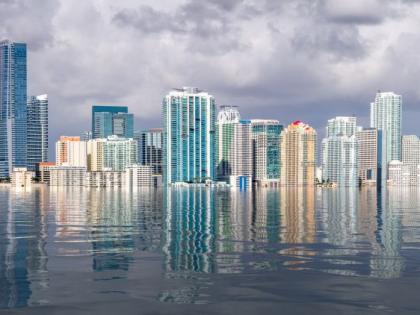Navi Mumbai Environmental Group Writes PM Narendra Modi to Address Coastal Flooding Threat
By Amit Srivastava | Updated: March 15, 2025 08:33 IST2025-03-15T08:27:49+5:302025-03-15T08:33:33+5:30
Navi Mumbai: A new study from New Zealand has highlighted a hidden threat of rising sea levels—an increase in ...

Representative Image
Navi Mumbai: A new study from New Zealand has highlighted a hidden threat of rising sea levels—an increase in groundwater levels that could lead to severe inland flooding. In light of this alarming research, city-based environmental group NatConnect Foundation has urged Prime Minister Narendra Modi to take immediate notice of the findings and address the potential risks to India’s coastal regions.
Green groups have also called on disaster management authorities to prepare for potential flooding from beneath the land.
Citing a study focused on Dunedin, a coastal city in New Zealand, NatConnect highlighted that rising sea levels could alter groundwater levels, exacerbating inland flooding risks. The findings were recently published in a science journal by AGU, a global organization representing over half a million Earth and space science professionals.
According to the report, South Dunedin already experiences periodic flooding, which will become even more severe as sea levels rise. Researchers describe the city as a case study for how New Zealand communities are adapting to climate change and coastal threats.
“These findings reinforce our longstanding demand to conserve wetlands, which act as urban sponges and protect river floodplains,” said B N Kumar, director of NatConnect Foundation. He urged authorities to preserve natural water bodies rather than bury them under infrastructure projects.
Kumar emphasized that the government must focus on disaster prevention rather than ignoring ecological threats. He also called on the Union Ministry of Environment, Forest, and Climate Change (MOEFCC) and the Geological Survey of India to study coastal groundwater tables alongside rising sea levels.
NatConnect expressed concern that, apart from a brief government report on coastal erosion, there has been little serious discussion about the risks posed by rising sea levels—despite India’s 7,500 km-long coastline.
“We are recklessly altering Coastal Zone Management Plans (CZMP) to accommodate real estate and infrastructure projects, putting lives and properties at risk,” said Nandakumar Pawar, director of NGO Sagar Shakti.
Governments are forced to spend crores on flood relief in areas like Uran and Panvel talukas, where wetland destruction for development has forced water to find new paths, Pawar pointed out.
This issue is expected to worsen in the Mumbai Metropolitan Region (MMR), where wetlands are vanishing rapidly, and agencies like CIDCO, JNPA, and MMRDA continue to neglect ecological concerns.
Kumar noted that New Zealand researchers relied on groundwater sensor data from 2019–2023, collected from 35 monitoring stations across Dunedin’s low-lying coastal areas—locations where much of the city’s infrastructure is concentrated.
“This situation is strikingly similar to Uran, where flooding occurs even during non-monsoon months,” Pawar added.
Open in app